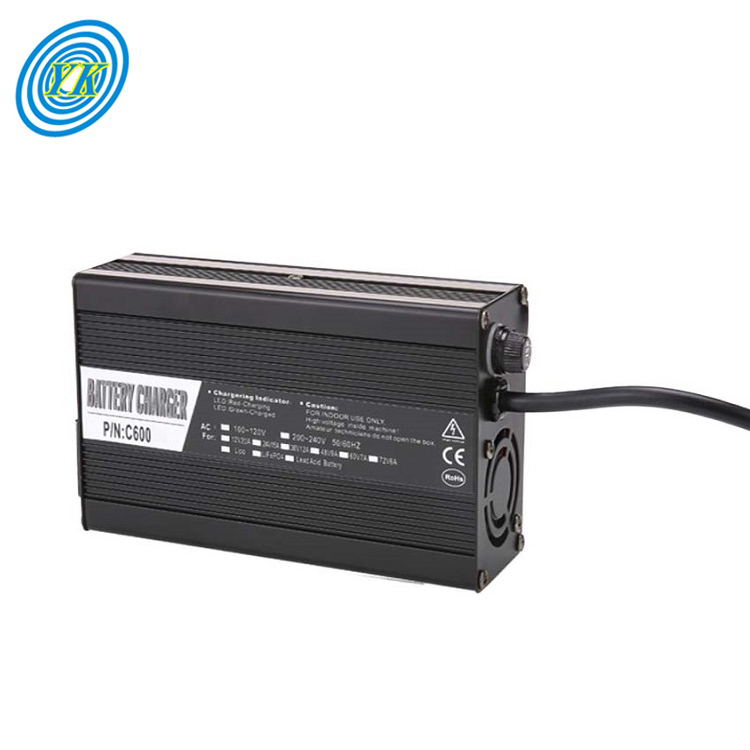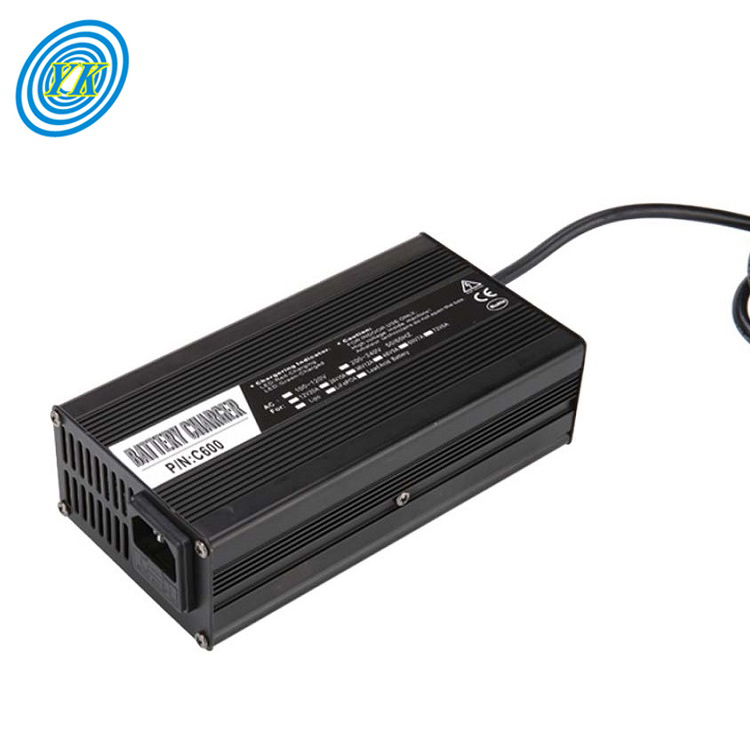News
Mastering the Art of Battery Charging: A Comprehensive Guide to Types, Tips, and Safety
Click: 812 Date: 03/21/2024 4::32::56 PM
Mastering the Art of Battery Charging: A Comprehensive Guide to Types, Tips, and Safety
The journey of battery charging technology has been nothing short of revolutionary, transforming from rudimentary concepts to sophisticated, energy-dense solutions that power our modern world. This article delves into the fascinating evolution of battery charging, tracing its roots from the early days of electricity to the cutting-edge advancements of today.
The Dawn of Electricity and the First Batteries
The story of battery charging begins with the invention of the voltaic pile by Alessandro Volta in 1800, inspired by the electric discharge observed in electric fish. This pile, consisting of copper and zinc discs separated by brine-soaked cloth, marked the birth of the first electric battery capable of providing a steady current to a circuit. The era of rechargeable batteries truly began with the development of lead-acid batteries by Gaston Planté in 1859, which were the first to be recharged and used for practical applications, such as illuminating train carriages.
The Transition to Portable Electronics
The 20th century saw significant advancements in battery technology, with the introduction of alkaline batteries in the 1950s. These batteries, based on the reaction between zinc and manganese dioxide, were a game-changer, offering improved capacity and laying the groundwork for the era of portable electronics. The development of alkaline batteries paved the way for the proliferation of devices from remote controls to transistor radios, marking the beginning of a new era where batteries became an integral part of our daily lives.
The Advent of Lithium-ion Batteries
The introduction of lithium-ion (Li-ion) batteries in 1991 by scientists like John B. Goodenough and Akira Yoshino marked a pivotal moment in battery charging history. These batteries, known for their small size, high voltage, and charge storage, revolutionized the landscape of portable electronics and electric vehicles. The cost of Li-ion batteries has since decreased significantly, making them a critical technology in the quest for zero-emissions transport and the information age.
The Future of Battery Charging: Solid-State Batteries and Beyond
As we look towards the future, the focus is shifting towards solid-state batteries, which replace the liquid electrolyte found in traditional lithium-ion batteries with solid materials like ceramics. This innovation promises to pack more energy into a smaller space, potentially improving the range of electric vehicles and reducing charging times. Additionally, solid-state batteries are considered safer due to the elimination of flammable solvents used in electrolytes.
Conclusion: The Evolution and Impact of Battery Charging
From the humble beginnings of the voltaic pile to the sophisticated advancements of solid-state batteries, the evolution of battery charging has been nothing short of remarkable. This journey has not only transformed how we power our devices but also set the stage for a sustainable and energy-efficient future. As technology continues to advance, the future of battery charging holds exciting possibilities, promising even more efficient, safe, and environmentally friendly solutions.
In the quest for portable power solutions, three distinct charging technologies stand out: USB chargers, wireless chargers, and solar chargers. Each offers unique advantages and caters to different needs, making them essential tools for today's tech-savvy world.
USB Chargers: The Standard
USB chargers are the most common type of charger, found in nearly every electronic device. They are compact, easy to use, and widely compatible with a vast array of devices. However, their reliance on a power source means they are not ideal for use in remote or power-scarce locations. USB chargers are best suited for charging devices at home, office, or any place with a readily available power outlet.
Wireless Chargers: The Future of Convenience
Wireless chargers offer a more convenient charging experience, eliminating the need for cables. They are particularly useful for devices like smartphones and tablets, which can be charged without the hassle of tangling cables. Wireless chargers are ideal for everyday use, providing a seamless charging experience without the clutter of cables. However, their charging speed is generally slower compared to USB chargers, and they require a compatible charging pad or mat.
Solar Chargers: The Green Alternative
Solar chargers are a step towards sustainable energy use, harnessing the power of the sun to charge devices. These chargers are lightweight, portable, and can be used outdoors, making them perfect for camping, hiking, or any outdoor activity. Solar chargers are compatible with a wide range of devices, including smartphones, tablets, and even some laptops. They are an excellent choice for those looking to reduce their reliance on traditional power sources and contribute to environmental sustainability. However, their charging speed can vary significantly depending on the amount of sunlight, and they may not be as efficient in cloudy or overcast conditions.
Conclusion: Choosing the Right Charger
The choice between USB, wireless, and solar chargers depends on your specific needs and circumstances. USB chargers are the most versatile and widely compatible, making them a safe choice for everyday use. Wireless chargers offer convenience and eliminate the need for cables, ideal for devices like smartphones and tablets. Solar chargers are the green alternative, perfect for outdoor activities and those looking to reduce their environmental impact. Each type of charger has its strengths and weaknesses, and the best choice depends on your specific use case and preferences.

In the quest to power up your devices efficiently and safely, selecting the right battery charger is a pivotal step. This article delves into the essential tips for choosing the perfect charger, focusing on key factors such as charging speed, capacity, and safety features.
Charging Speed: Prioritizing Efficiency
In our fast-paced world, the convenience of fast charging is paramount. Look for chargers that boast features like Quick Charge or Power Delivery, designed to charge your devices swiftly, ensuring they're ready to use when you are. These technologies are a game-changer, offering a significant boost in charging efficiency and reducing downtime.
Capacity: Ensuring Adequate Power Supply
The capacity of a charger is a critical factor to consider. It determines how much charge it can deliver to your devices, ensuring they remain powered throughout the day. Assess your daily usage patterns and select a charger with a capacity that meets your needs, whether you're looking for a quick top-up or a more substantial power boost.
Safety Features: Protecting Your Devices
Safety should be your top priority when choosing a battery charger. Opt for chargers equipped with safety mechanisms such as overcurrent protection, temperature control, and surge protection. These features not only safeguard your devices from damage but also extend the lifespan of your charger, making it a worthwhile investment.
Compatibility: A Versatile Solution
Not all chargers are created equal when it comes to device compatibility. It's crucial to select a charger that can accommodate a wide range of devices, from smartphones and tablets to laptops and other gadgets. A versatile charger eliminates the need for multiple chargers, streamlining your charging needs and reducing clutter.
Build Quality and Brand Reputation: Durability and Trustworthiness
Investing in a high-quality charger is a wise decision for long-term satisfaction. Pay attention to the build materials, design, and overall durability of the charger. Additionally, consider the reputation of the brand. Established brands often prioritize quality and reliability, offering chargers that have undergone rigorous testing to meet industry standards.
Intelligent Charging: Optimizing Your Charging Experience
In the era of smart technology, why settle for a basic charger? Choose a charger with intelligent charging capabilities that can adapt to the specific needs of your devices. Smart chargers can recognize the type of device connected and adjust the charging voltage accordingly, optimizing the charging process and prolonging battery life.
Portability: The Key for On-the-Go Charging
For those constantly on the move, the portability of a charger is a crucial consideration. Opt for a charger that is compact and lightweight, making it easy to carry in your bag or pocket. Portable chargers, also known as power banks, are ideal for those who need a reliable power source while traveling or during outdoor activities.
Beyond the Basics: Enhancing Your Charging Experience with Accessories
In the realm of battery charging, accessories play a pivotal role in enhancing the user experience, ensuring efficiency, and extending the lifespan of both the charger and the device being charged. This article delves into the world of charger accessories, exploring how they can transform your charging routine into a more streamlined, efficient, and enjoyable process.
1. The Power of Cables
Cables are the unsung heroes of charging, connecting devices to their chargers. However, they are often overlooked in the quest for the latest and greatest charging technology. High-quality cables can significantly impact the charging speed and reliability. Look for cables that are durable, have a good conductivity rate, and are designed to handle the power requirements of your device. A well-chosen cable can ensure that your device charges quickly and safely, without the risk of overheating or damage.
2. Adapters: Your Key to Compatibility
In a world where devices come in all shapes and sizes, adapters serve as the bridge between your charger and your device. Whether you're traveling abroad and need a different plug or simply have a device with a unique charging port, adapters make it possible to charge your device without the hassle of finding a compatible charger. They are essential for maintaining the flexibility and convenience of your charging setup, allowing you to charge your devices anywhere, anytime.
3. Stands and Docks: Elevating Your Charging Experience
For those who prefer a more hands-free approach to charging, stands and docks offer a convenient solution. These accessories not only provide a stable surface for your device to rest on but also often include additional features such as USB ports, HDMI connections, and even built-in speakers. They are perfect for charging devices like smartphones, tablets, and laptops while you work, play, or simply relax.
4. The Future of Charging: Wireless Solutions
As technology advances, so does the charging landscape. Wireless charging is set to revolutionize the way we charge our devices, offering a seamless and hassle-free charging experience. Wireless charging eliminates the need for cables and adapters, making it easier than ever to charge your devices. It also reduces the risk of damage from tripping over cables or dropping your device. With wireless charging, you can simply place your device on a compatible charger or dock, and it will charge automatically.
5. Accessories for a Greener Charge
In today's environmentally conscious world, choosing eco-friendly charging accessories is not just a matter of personal preference but also a responsible choice. Look for charging cables made from recycled materials, adapters designed to reduce energy consumption, and stands and docks that are energy-efficient. These accessories not only help you charge your devices more sustainably but also contribute to a healthier planet.
In conclusion, charger accessories are more than just add-ons; they are tools that can significantly enhance your charging experience, making it more efficient, convenient, and environmentally friendly. Whether you're looking for the best cable, adapter, stand, dock, or even a wireless charging solution, investing in high-quality charger accessories can transform your charging routine into a more enjoyable and sustainable process.
"Safety First: Preventing Overcharging and Ensuring Your Devices Stay Protected"
In the realm of battery charging, safety is paramount. Overcharging and overheating are common issues that can lead to device damage, fire, and even explosion. This article delves into the critical aspects of battery charging safety, providing practical tips and best practices to keep your devices safe and operational.
Understanding the Risks
Batteries, especially lithium-ion batteries, are susceptible to overheating and fire due to the high energy density. Overcharging can cause the battery to heat up excessively, potentially leading to thermal runaway, where the battery's temperature continues to rise uncontrollably. This can result in a fire or even an explosion, posing a significant risk to both the device and its user.
Preventing Overcharging
To mitigate the risk of overcharging, it's essential to use chargers that are specifically designed for your device. Manufacturer-approved chargers are equipped with safety features, such as auto-shutoff mechanisms, which can prevent overcharging by automatically stopping the charging process once the battery is full. Additionally, establishing a charging protocol or schedule can help ensure that no battery is left unattended or overcharged for an extended period.
Ensuring Proper Charging Practices
Use Approved Chargers: Always use chargers that are approved by the device's manufacturer. Unapproved chargers may not have the necessary safety features and can lead to overcharging.
Avoid Overnight Charging: Do not leave devices charging overnight. While most devices are designed to stop charging once the battery is full, overcharging can still occur if the charger overheats.
Charge in a Safe Environment: Ensure that the charging area is well-ventilated and free from flammable materials. Avoid charging devices on soft surfaces or in areas where they might come into contact with flammable materials.
Inspect Chargers Regularly: Check chargers for any signs of wear or damage. Frayed or damaged cords should be replaced immediately to prevent sparks and fires.
Turn Off Devices When Not in Use: Do not leave devices exposed to excessive heat or cold temperatures. Overheating can lead to battery failure and increase the risk of fire or explosion.
Safety Equipment and Training
Proper Personal Protective Equipment (PPE) is crucial for safety during charging. Ensure that safety equipment, such as insulated gloves, safety goggles, and protective aprons, is readily available and used correctly. Regular training and mock drills can also help ensure that employees are prepared to respond to emergencies related to battery charging.
Conclusion
Safety in battery charging is a shared responsibility. By following best practices, using approved chargers, and ensuring a safe charging environment, you can significantly reduce the risk of overcharging and protect your devices from potential damage or hazards. Remember, the safety of your devices and your well-being should always be the top priority when it comes to charging practices.

